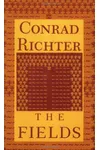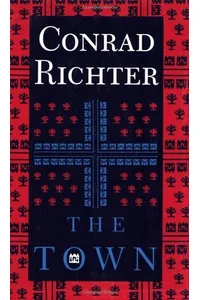Step into the rugged, captivating world of The Awakening Land, where the Ohio Valley frontier unfolds through the eyes of a resilient pioneer family! Conrad Richter’s Pulitzer Prize-winning trilogy, a gem of historical fiction, traces the Luckett family’s journey from untamed wilderness to a bustling industrialized town. With its vivid storytelling and heartfelt themes, this series invites readers to experience the raw beauty and challenges of early American life.
Centered on Sayward Luckett, a fierce and unforgettable heroine, The Awakening Land blends adventure, family bonds, and the clash between nature and progress. Ready to explore a saga that’s as timeless as the land itself? Let’s dive in!
How The Awakening Land Began
Conrad Richter, born in Pennsylvania in 1890, was steeped in tales of America’s frontier from a young age. His mother’s family, rooted in early American history, inspired his passion for pioneer stories. Richter’s meticulous research—poring over old manuscripts, letters, and oral histories—brought authenticity to The Awakening Land. Published between 1940 and 1950, the trilogy reflects his desire to capture the spirit of Ohio’s transformation, blending lyrical prose with the gritty realities of settler life.
The Heart of The Awakening Land
The trilogy comprises three novels: The Trees (1940), The Fields (1946), and The Town (1950). In The Trees, we meet the Luckett family as they migrate from Pennsylvania to Ohio’s wilderness around 1795. Sayward, the eldest daughter, steps up as a leader amidst harsh conditions, battling disease, wildlife, and isolation. The Fields follows Sayward’s married life with Portius Wheeler, raising nine children while the settlement grows into a farming community. The Town, which clinched the 1951 Pulitzer Prize for Fiction, portrays the settlement’s evolution into the industrialized Americus, seen through Sayward’s eyes and her son Chancey’s journalistic lens.
Richter’s style is poetic yet unadorned, weaving themes of family loyalty, resilience, and the tension between man and nature. The Ohio Valley itself is a character, transforming from dense forest to cultivated fields to a modern town. Richter’s use of authentic pioneer dialect, drawn from historical records, immerses readers in the era, while Sayward’s journey—from teenager to matriarch—embodies the strength of pioneer women.
Why The Awakening Land Resonates
The Awakening Land’s impact lies in its vivid portrayal of America’s frontier spirit. Its 1978 TV miniseries adaptation, starring Elizabeth Montgomery and Hal Holbrook, brought Sayward’s story to a wider audience, cementing its cultural footprint. Critics like Pulitzer winner Louis Bromfield praised its immersive quality, noting, “You live them.” Nobel laureate Isaac Bashevis Singer called it a novel that feels like Richter “was actually there.” The trilogy’s reissues by Ohio University Press (1991) and Chicago Review Press (2017) show its enduring appeal, inspiring readers and historians alike to explore Ohio’s pioneer heritage.
Today, The Awakening Land remains a powerful reminder of the sacrifices and triumphs that shaped America. Its focus on family, perseverance, and environmental change resonates with modern readers, making it a must-read for historical fiction fans.
About The Awakening Land
- Publication Years: 1940 (The Trees), 1946 (The Fields), 1950 (The Town)
- Number of Books: Three
- Awards: Pulitzer Prize for Fiction (1951) for The Town, Ohioana Library Medal (1947)
- Adaptation: 1978 TV miniseries
Grab The Trees and dive into The Awakening Land’s epic world of grit, heart, and history!


